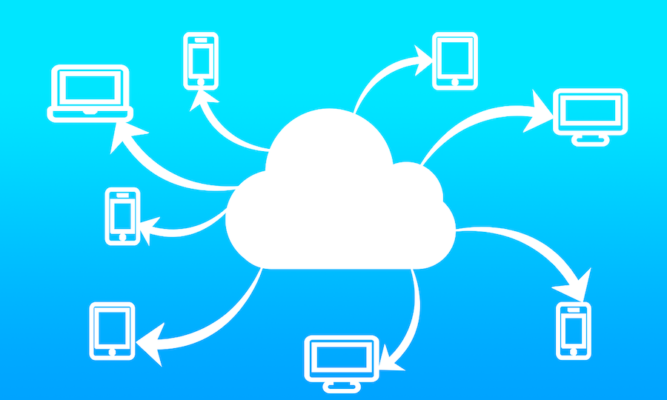
Many businesses and companies are moving towards the cloud, as cloud native environments offer many benefits. In this post, we dig deep to explain the advantages of a cloud native application platform architecture.
What is Cloud Native Application Architecture?
In the past, most enterprises relied upon on-premises, monolithic applications. With the expansion of the internet, we now have many application services living in the cloud. While many businesses are content to supplement their local applications with cloud-based services, forward-looking organizations are building new enterprise applications that live in the cloud. This is what cloud native application architecture is about.
Cloud native computing is a software development methodology that uses cloud computing resources, services, and capabilities to build and run highly responsive, scalable, and fault-tolerant applications in dynamic, rapidly evolving operating environments such as public, private and hybrid clouds. Cloud native applications are explicitly designed to use cloud technology. Rather than reworking an existing application to be cloud-enabled by shifting it into the cloud using basic services, cloud native platform architecture begins in the cloud.
Cloud Native Design Principles
Designed as microservices
Cloud native application architecture leverage cloud-based managed technologies and are built using microservices, serverless function-based programming, and changeless infrastructure. These design tenets create distinct, loosely-coupled applications and systems that are resilient to failure, have elastic scaling capabilities, and are more manageable.
Cloud native applications are often organized as microservices. Microservices divide applications into smaller units that small teams can more easily maintain. This microservice architecture allows updating a service without disrupting other services. It also allows the building of distributed and scalable systems. Each microservice is usually deployed as a container or group of containers.
The microservice approach entails developing single apps as a suite of small services. Each service runs as a separate process and communicates via lightweight protocols such as HTTP. Microservices are built around business capabilities, and you can deploy each of them independently. An application continues running even if part of it is down because microservices allow for spinning up a replacement, leading to the creation of robust software and higher user satisfaction.
Developed with the best combination of languages and frameworks
Each cloud native application service can be developed using the coding language and framework ideal for its functionality. Cloud native apps are polyglot, that is, they use a combination of languages, runtimes, and frameworks. One example is using WebSockets to develop a streaming service, Python to build a machine learning application, and spring-boot to expose the REST APIs.
The polyglot approach to cloud native removes many barriers, enabling developers to work independently. This modular application development approach enables developers to focus on the innovation and code of the application rather than on hosting or specific technologies like kubernetes clusters, databases, event/messaging infrastructure, or application services.
Why is Cloud Native Architecture Important?

Cloud native application architecture is the future of application development. It will become the dominant design and architecture model over the next 3-5 years because of the advantages of the approach – fueled by the rapid innovation of cloud technology providers. Cloud native applications are specifically designed to provide the same development and automated management experience across private, public, and hybrid clouds.
Cloud-native enables you to rapidly innovate, deploy and operate your technology and evolve it to the needs of the business, delivering continuous improvement to the needs of the user at a pace they expect and even demand. Cloud native environments deliver these benefits by utilizing cloud computing resources that provide self-service, on-demand provisioning of resources, and even building their own automation to automate the application life cycle from development to production use.
Availability
Unlike traditional apps, cloud native apps are more resilient to failures. A distributed architecture of redundant microservices can automatically handle outages and enable corrective action. Even if one microservice fails, interruptions are imperceivable because processes move from one data center to another.
Speed
The microservices-based nature of cloud native environments not only permits each microservice to be developed with the best programming language for that service but to be placed on the best hardware for that service – whether that is where it has the fastest access to a datastore or where it has the best resources for CPU-intensive calculations.
Scalability
You can quickly meet demands since you only need to scale the necessary components. Whether because of business growth or a temporary peak in user demand, digital resources can be allocated as needed. Memory, storage, and processing power are all readily-scalable resources in cloud native application architecture.
Favor Managed Services
Cloud native environments also offer managed services that relieve the pain of managing the backend infrastructure. Organizations may be wary of outsourcing their IT to third-party services or being ‘ locked in’ to a given provider. While these concerns deserve consideration, managed services can save considerable time, headaches, and operation costs.
In-Depth Defense
Unlike conventional architecture, which emphasizes perimeter security. I.e., placing what you trust inside and untrusted outside, cloud native architectures deal with attacks as a whole — there is no ‘inside and outside.’ Relying on perimeter security has always been vulnerable to both inside and external attacks.
Each cloud native architecture component can protect itself. This makes the architecture resilient and easier to deploy, especially if there’s no trusted network between the user and server.
Wrap up
We hope you now understand cloud native architecture environments better. As we move towards adopting 5G, more developers will adopt cloud native architecture for its broad benefits – benefits that can be realized with proper planning and implementation.
If your organization is ready to reap the benefits of cloud native application architecture, book a consultation to speak with one of our experts.